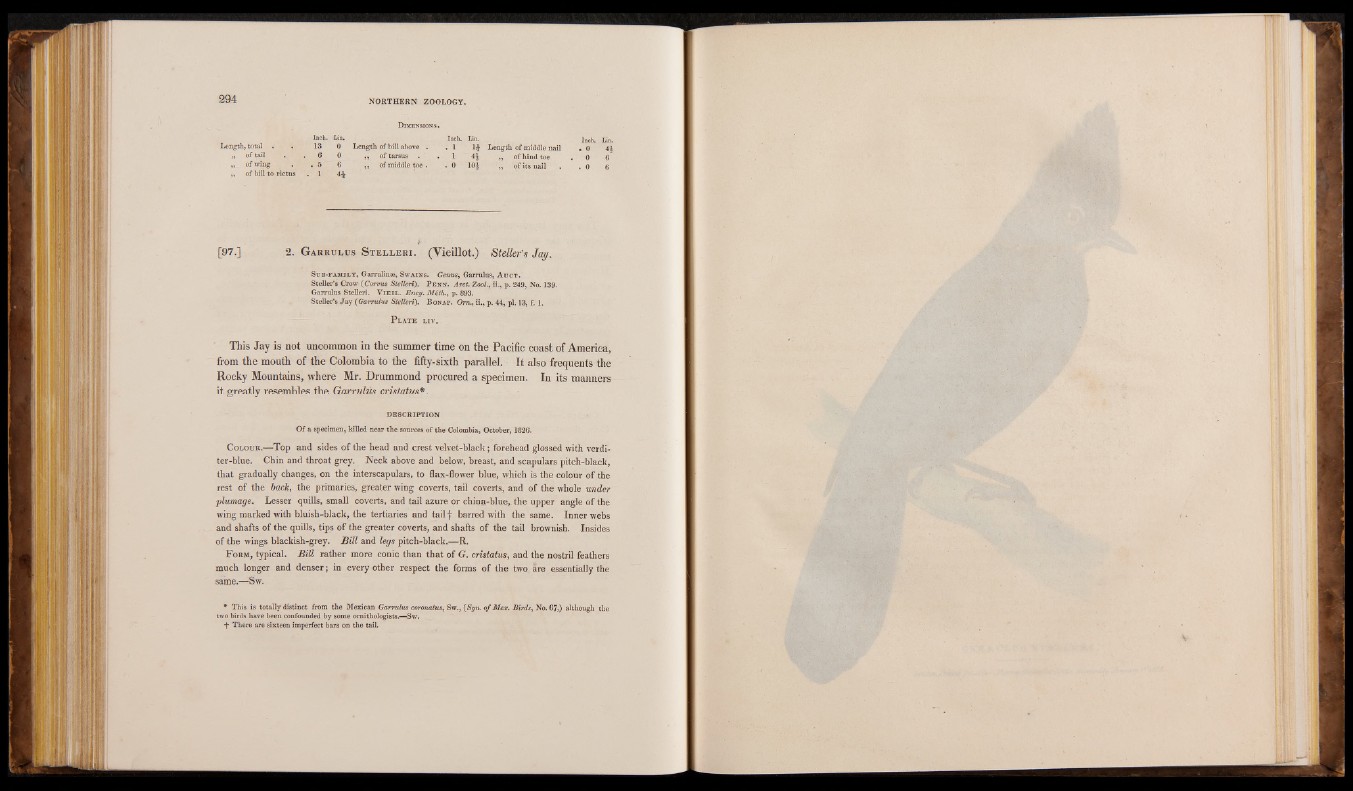
Dimensions.
Inch. Lin. Length, total Inch. Lin. Inch. Lin. 13 0 Length of bill above . . i M Length of middle nail . 0 4 ,, of tail . 6 0 „ of tarsus . I 41 ,, of hind toe . 0 6 „ of wing . . 5 6 „ of middle toe . . 0 101 :,, of its nail . . 0 6 of biU to rictus . 1 n
[97.] 2. G a r r u l u s S t e l l e r i . (Vieillot.) Steller’s Jay.
Su b -f a m il y , Garrulinse, Sw ain s. Genus, Garrulus, A u c t .
Steller’s Crow (Corvus Stelleri). P e n n . Arct. Zool., ii., p. 249, No. 139.
Garrulns Stelleri. V i e i l . Ency. Moth., p. 893.
Steller’s Jay (Garrulus Stelleri). B onap. Ora., ii., p. 44, pi. 13, f. 1.
P late liv.
This Jay is not uncommon in the summer time on the Pacific coast of America,
from the mouth of the Colombia to the fifty-sixth parallel. It also frequents the
Rocky Mountains, where Mr. Drummond procured a specimen. In its manners
it greatly resembles the Garrulus cristatus*.
DESCRIPTION
Of a specimen, killed near the sources of the Colombia, October, 1826.
C olour.—Top and sides of the head and crest velvet-black; forehead glossed with verdi-
ter-blue. Chin and throat grey. Neck above and below, breast, and scapulars pitch-black,
that gradually changes, on thé interscapulars, to flax-flower blue, which is the colour of the
rest of the back, the primaries, greater wing coverts, tail coverts, and of the whole under
plumage. Lesser quills, small coverts, and tail azure or china-blue,, the upper angle of the
wing marked with bluish-black, the tertiaries and tail f barred with the same. Inner webs
and shafts of the quills, tips of the greater coverts, and shafts of the tail brownish. Insides
of the wings blackish-grey. Bill and legs pitch-black.—R.
F orm, typical. Bill rather more conic than that of G. cristatus, and the nostril feathers
much longer and denser; in every other respect the forms of the two are essentially the
same.—Sw.
* This is totally distinct from the Mexican Garrulus coronatus, Sw., (Syn. of Mex. Birds, No. 67,) although the
two birds have been confounded by some ornithologists.—Sw.
■)* There are sixteen imperfect bars on the tail.